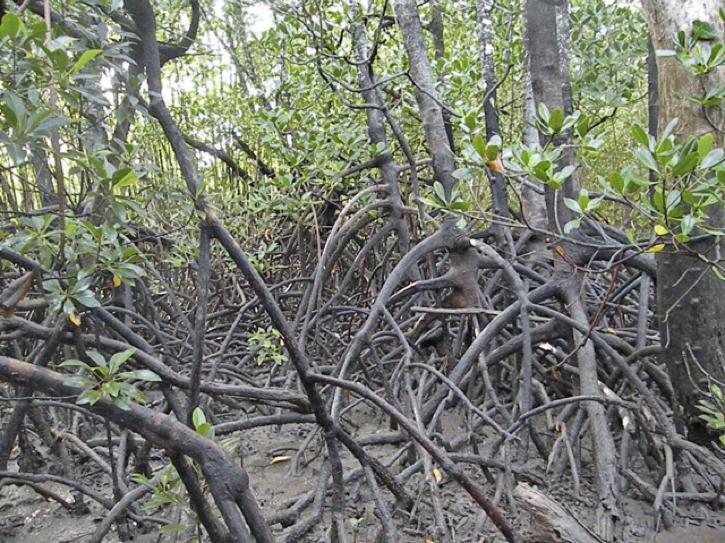~ Guest Blogger Denise Lawungkurr Goodfellow ~
Mangroves are plants that mostly grow in subtropical and tropical regions that are subject to periodic tidal inundation by salt water. In the NT mangals (mangrove forests) cover about 4,120 sq. km, constituting a third of such communities found in Australia (Lee, 2003). Mangals in southern Australia are dominated by a single plant, Avicennia marina. But in the tropical north the richness is astounding with at least 36 species in Darwin Harbour alone.
Within days of my arrival in Darwin, in mid-1975, I was among the mangroves fringing Darwin Harbour fishing and canoeing and birdwatching and learning about crocodiles, box jellyfish, Chironex fleckeri, and all the other things likely to kill one. However, I thought the mangroves worth the risk, for the wildlife there had to be seen to be believed.
I was rapt, particularly by the birds, and began to learn what I could from the limited information available in those days, and through observation. I spent long hours sitting on a convenient stump or looping root, my feet deep in clinging mud, listening and watching.

Stilt-rooted mangroves Rhizophora stylosa
Mangrove birds range in size, from the tiny Little Kingfisher Ceyx pusillus to the one of the world’s largest herons, Great-billed Heron Ardea sumatrana, and in boldness (or lack of it) from the shy Chestnut Rail Eulabeornis castaneoventris to the outgoing and inquisitive Mangrove Robin Peneoenanthe pulverulenta.
Once, a Mangrove Robin hopped up to my baby son Rowan as he sat gurgling happily in his pusher on a mud flat while my husband and I were searching, in vain for that very same species with our birding group. Occasionally this little creature would hop close to me and cock its head as if to query what I was up to as I crouched within a grove of Ceriops tagal, skinny little mangrove trees that form dense groves, watching for Chestnut Rail. Henry David Thoreau, American essayist, poet, and naturalist described the feelings that arise from such an encounter:
I once had a sparrow alight upon my shoulder for a moment while I was hoeing in a village garden, and I felt that I was more distinguished by that circumstance than I should have been by any epaulet I could have worn.
Some birds are quite plain, for example, the tiny brown-grey Mangrove Gerygone Gerygone levigaster while others take the breath away, the royal blue, purple, turquoise and bottle-green of various kingfishers, for example. Then there is Red-headed Honeyeater Myzomela erythrocephala, its scarlet plumage as bright as a Christmas lantern, and the butter-yellow and leaf-green Yellow White-eye Zosterops luteus. The calls were just as varied, from the rollicking song of Green-backed Geryone, Gerygone chloronota, to the sonorous trumpeting of Black Butcherbird Cracticus qyoyi. I loved them all and was happy to perch enraptured, on the looping roots of a stilt-rooted mangrove, just listening and watching.
I didn’t realise how limited my knowledge was until two years after I arrived an Aboriginal elder, Mary Lee, invited me to join the Aboriginal Women’s Resource Centre Committee. Mary was one of the Larrakia or ‘saltwater people’ who spoke for the Darwin area. One of our jobs was to take Aboriginal women from camps around Darwin to the mangroves. There we gathered shellfish, chopped down dead trees for mangrove worm (shipworm, Teredo sp.), and caught mud crabs, gigantic creatures with claws capable, so I was told, of breaking the neck off a beer bottle. It was fun, and ploughing through knee-deep mud and clambering over the looping roots of those stilt mangroves was great exercise.
